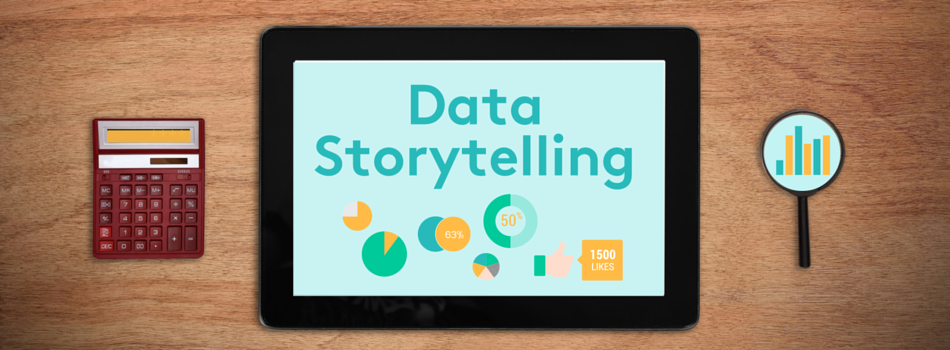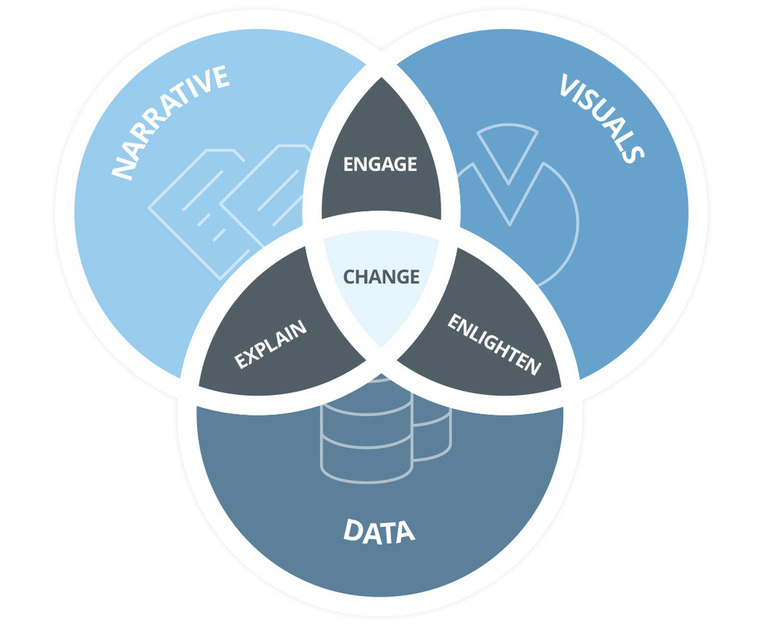Data Storytelling: The Future Essential Data Skills
August 9, 2018Data storytelling will be a new exciting field in which science and art merge. And data become truly valuable only when they can drive our actions toward changes for better.

After your business has started collecting and gathering data from all sources, the next difficult step is to dig into those data and get the potential value of them. Your collected data is like a gold mine hidden deep down beneath the earth. The data analyst is like a gold miner digging into data to find valuable insights. But those insights can only become truly valuable if they can turn into actions or changes in your business. If those insights is not understood or does not look appealing to people, they are nothing more than pieces of metal. Google’s Chief Economist Dr. Hal R.Varian stated, "The ability to take data—to be able to understand it, to process it, to extract value from it, to visualize it, to communicate it—that’s going to be a hugely important skill in the next decades."
As data becomes increasingly ubiquitous, we have witnessed the hot trends of the jobs of data analysis and mining. LinkedIn recently reported that data analysis is consistently one of top 4 wanted skills in job description. But interestingly the last skill of transforming those data insights into actions is in less required although those top data analyst with advanced degrees in mathematics, economics, statistics struggle to communicate their insights to others effectively. Our ultimate goal is the change, we are getting close but still not reaching yet.
The demand of data storytelling skill will increase in the future. With the availability of self-service data tools, more and more people will be able to access the data insight by their own. As a result, more and more insights will be generated like never before. However, unless we enhanced the communication for those insights, we only see lower and lower conversion rate from insight-to-value. If people see those insight not appealing enough, change will never occurs. Data mean nothing!
Data Storytelling is a new term. Hearing the term, people normally think about the data visualization, info-graphics, dashboard, data presentation. Too often, people understand storytelling is just beautiful and clear charts and graphs. The truth is that data storytelling is a structured approach to communicate those insights, it involves combinations of three elements: data, visuals and narrative.

When we have data and narrative going along, we are explaining to our audience what is happening and maybe why. When data is coupled with visuals, we are enlightening the understanding of data. Seeing charts and graphs, we have have better feel of the trend. When visuals is applied to narratives, we are engaging our audience to the story. The effect is like we watch a good Hollywood movie. And with the combination of all three elements: data, visuals and narratives, we will explain, enlighten and engage our audiences. And by those actions, we may have the chance to drive our audiences to actions. That’s our ultimate goal.
The importance of data storytelling
Story has been going with us through the history. Our ancestors told us story of heros, our country emergence. Those story are passed from generation to generation and will be continued.
Today modern storytelling may be associated with TED for example and the analysis of the most 500 popular TED talks shows that storytelling made of 65% of their content. So we can see that storytelling is an effective way to convey ideas, thoughts and insights in the way that memorable, persuasive and engaging.
According to study, human decisions are often attached to emotion not logic. How many times we buy a thing because we want it and not because we need it? We buy a new phone to replace the last year model which is still working very well. So things that touch our emotion are the ones lead us to action. The data insights represented in numbers or charts and graphs touch us mostly in the logic layers but story touches us deeper in our emotion layers. That is the reason why story is much more effective in driving our actions by its power of memorability, persuasiveness and engagement.
Memorable: A study by Stanford professor Chip Heath (Made to Stick author) found 63% could remember stories, but only 5% could remember a single statistic. While 2.5 statistics were used on average in the exercise and only 10% of the participants incorporated a story, the stories are what caught people’s attention.
Persuasiveness: In another study, researchers tested two variations of a brochure for the Save the Children charity organization. The story-based version outperformed the info-graphic version by $2.38 to $1.14 in terms of per participant donations. Various statistics on the plight of African children were far less persuasive than the story of Rokia, a seven-year-old from Mali, Africa.
Engagement: Researchers also discovered people enter into a trance-like state, where they drop their intellectual guard and are less critical and skeptical. Rather than nitpicking over the details, the audience wants to see where the story leads them. As mathematician John Allen Paulos observed, “In listening to stories we tend to suspend disbelief in order to be entertained, whereas in evaluating statistics we generally have an opposite inclination to suspend belief in order not to be beguiled.”
Conclusion
Many great insights could be never be a gold if they are not fueled by a convincing story. Data storytelling will be a new exciting field in which science and art merge. And data become truly valuable only when they can drive our actions toward changes for better.
<3 koolreport team
